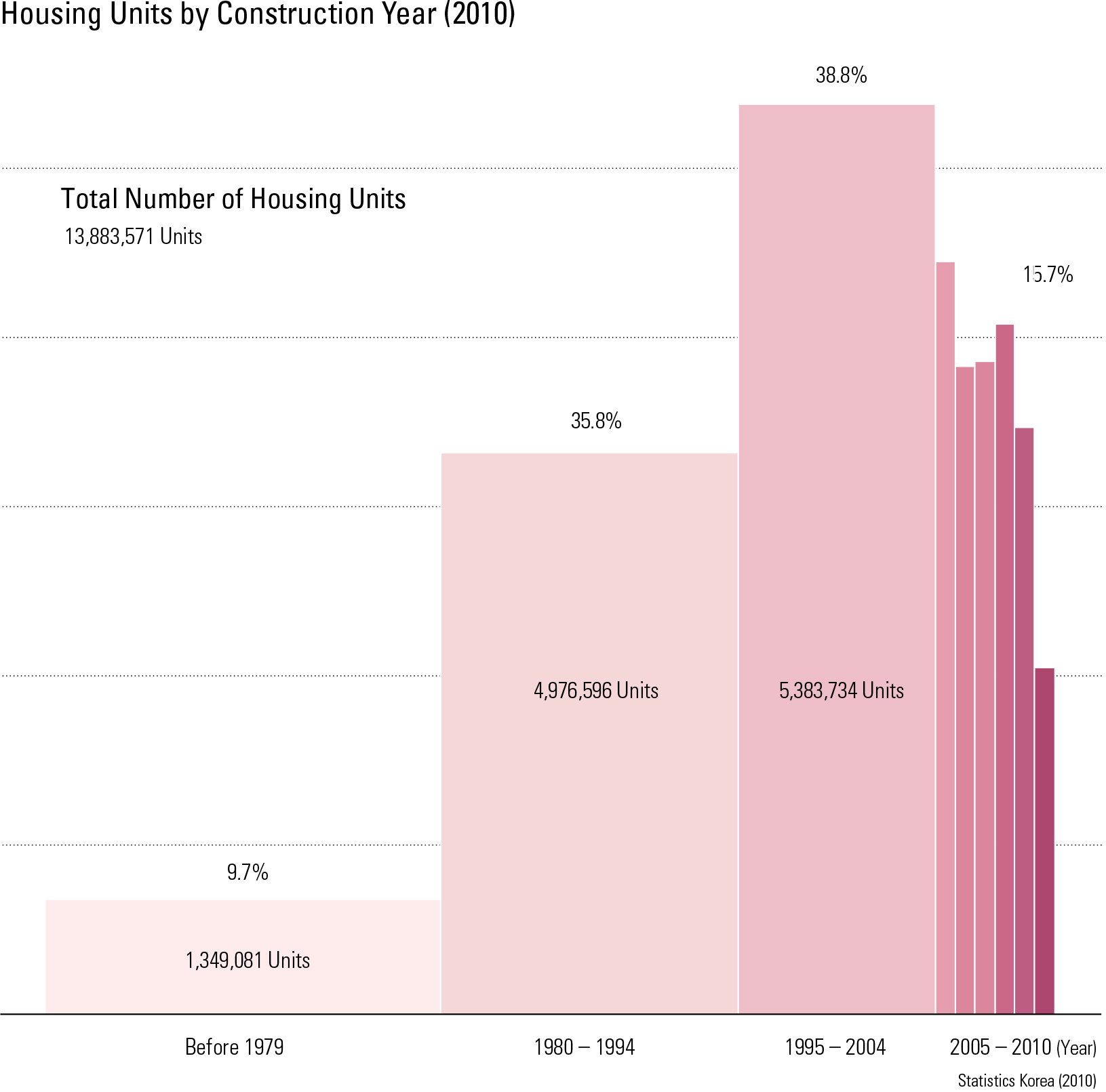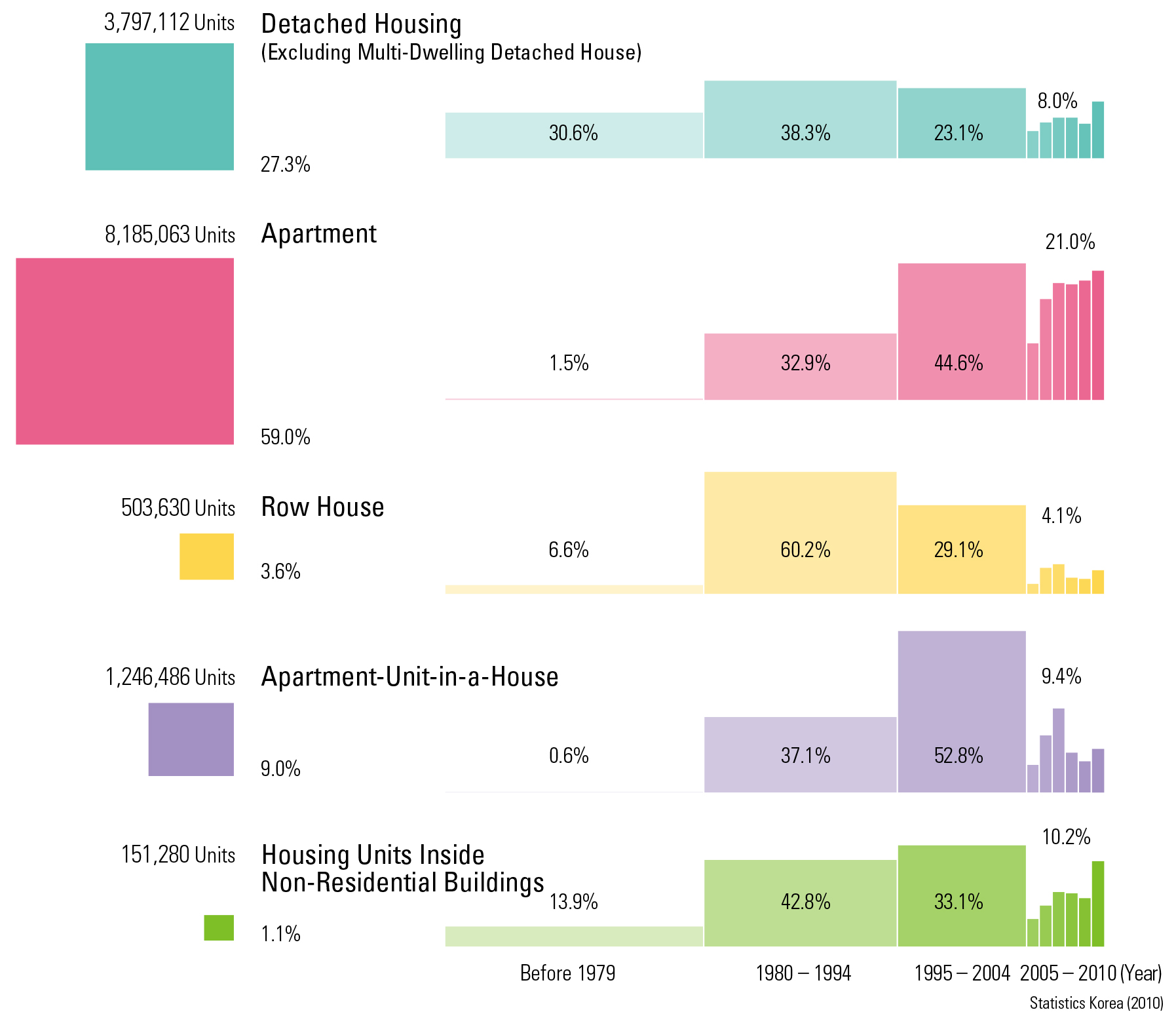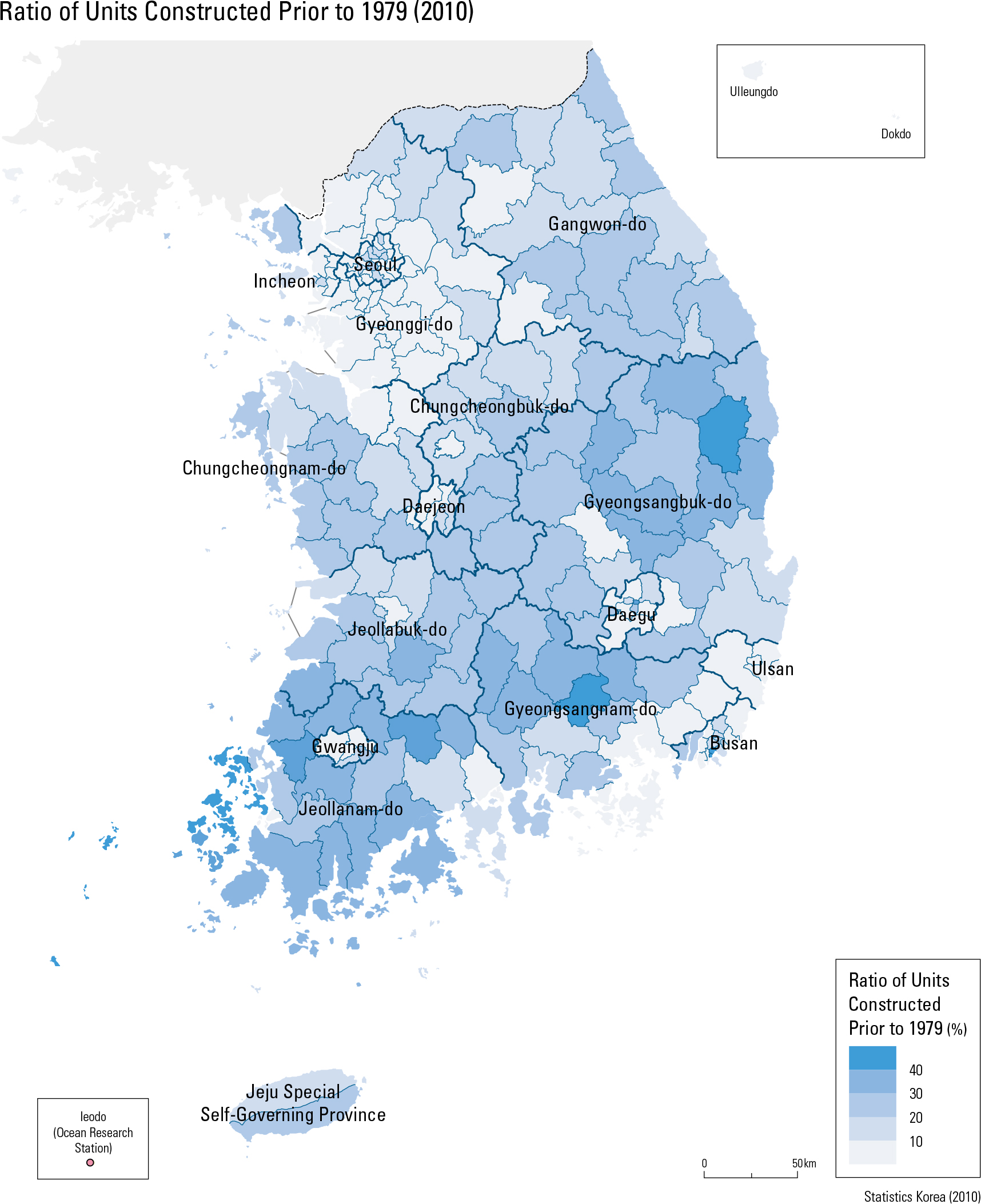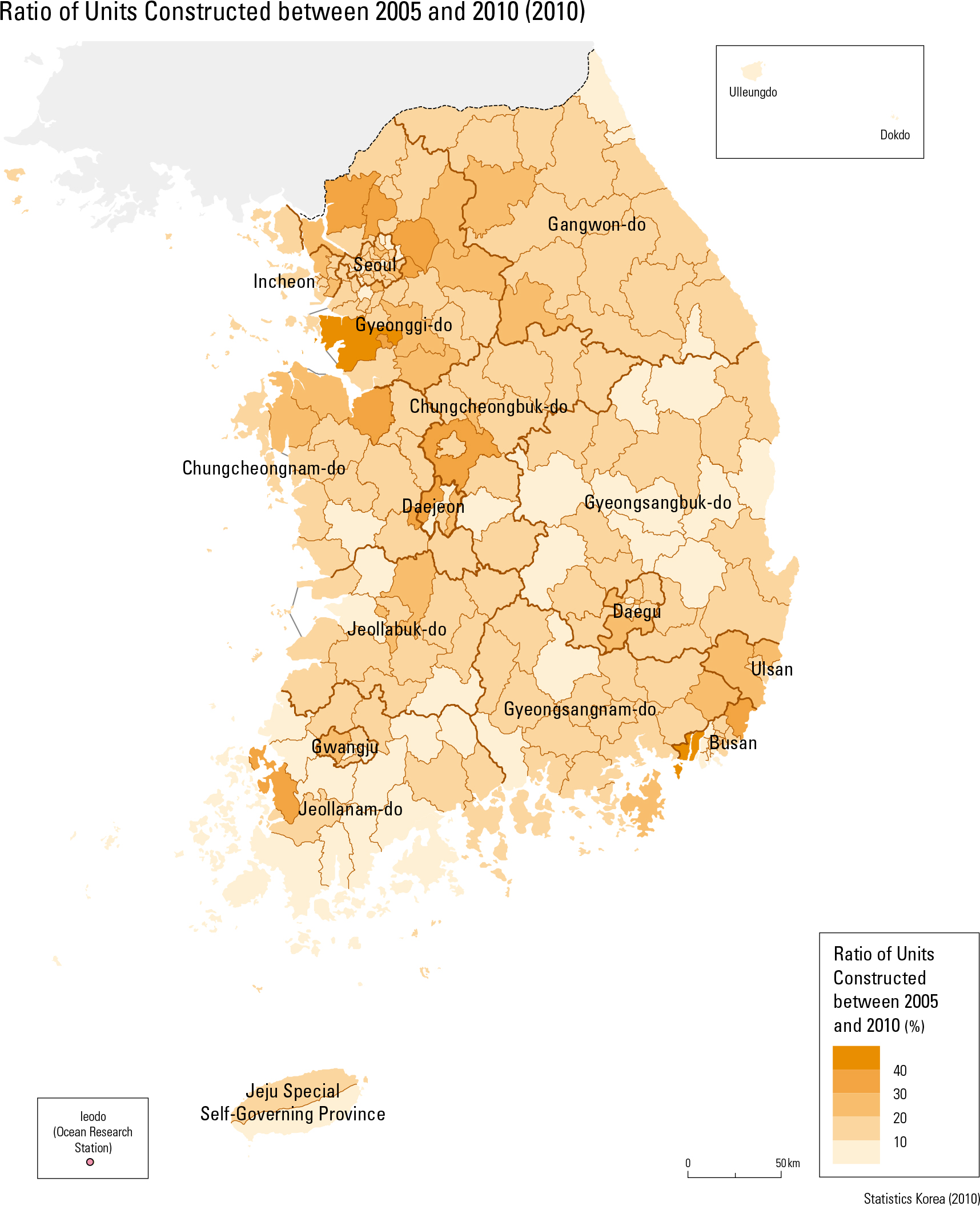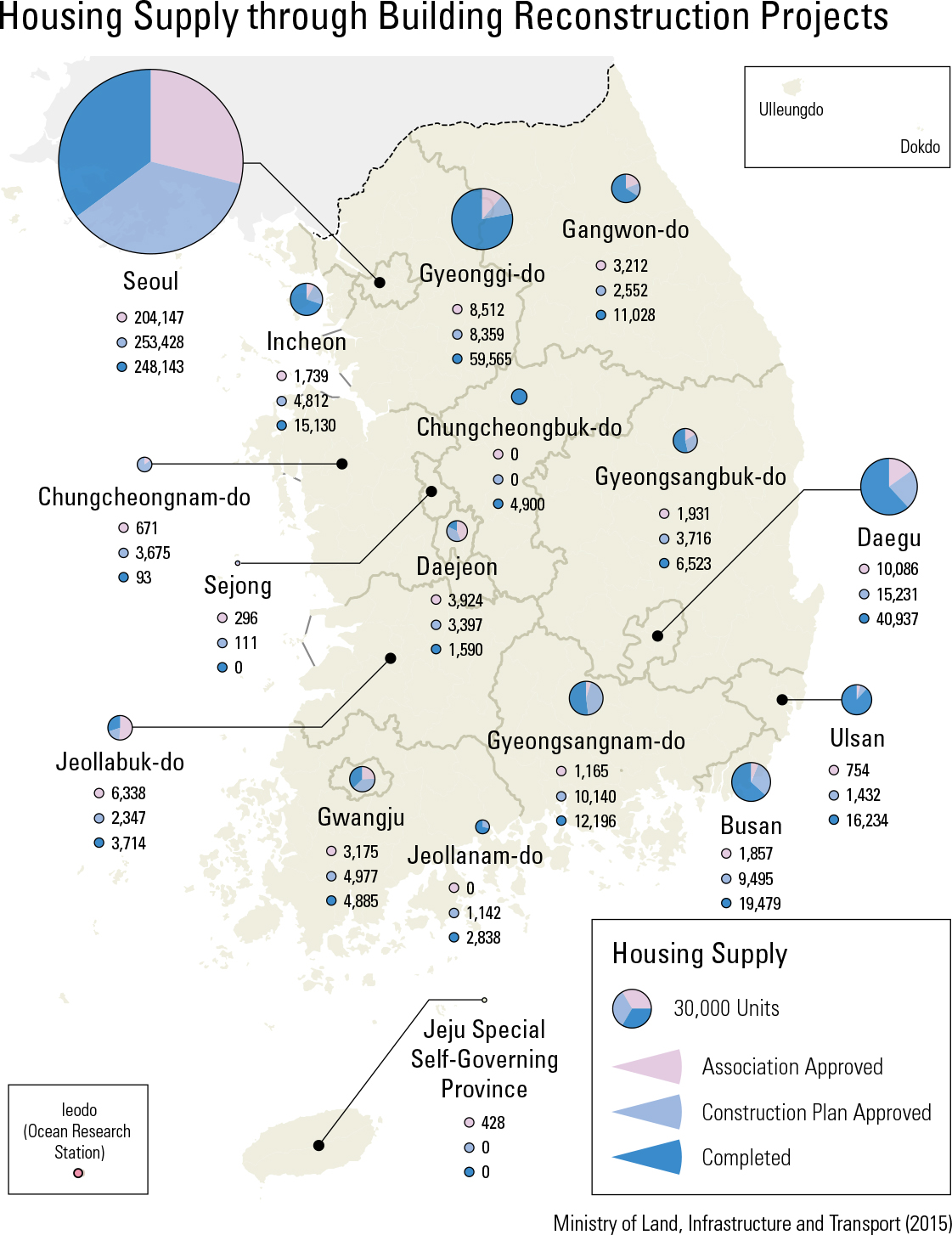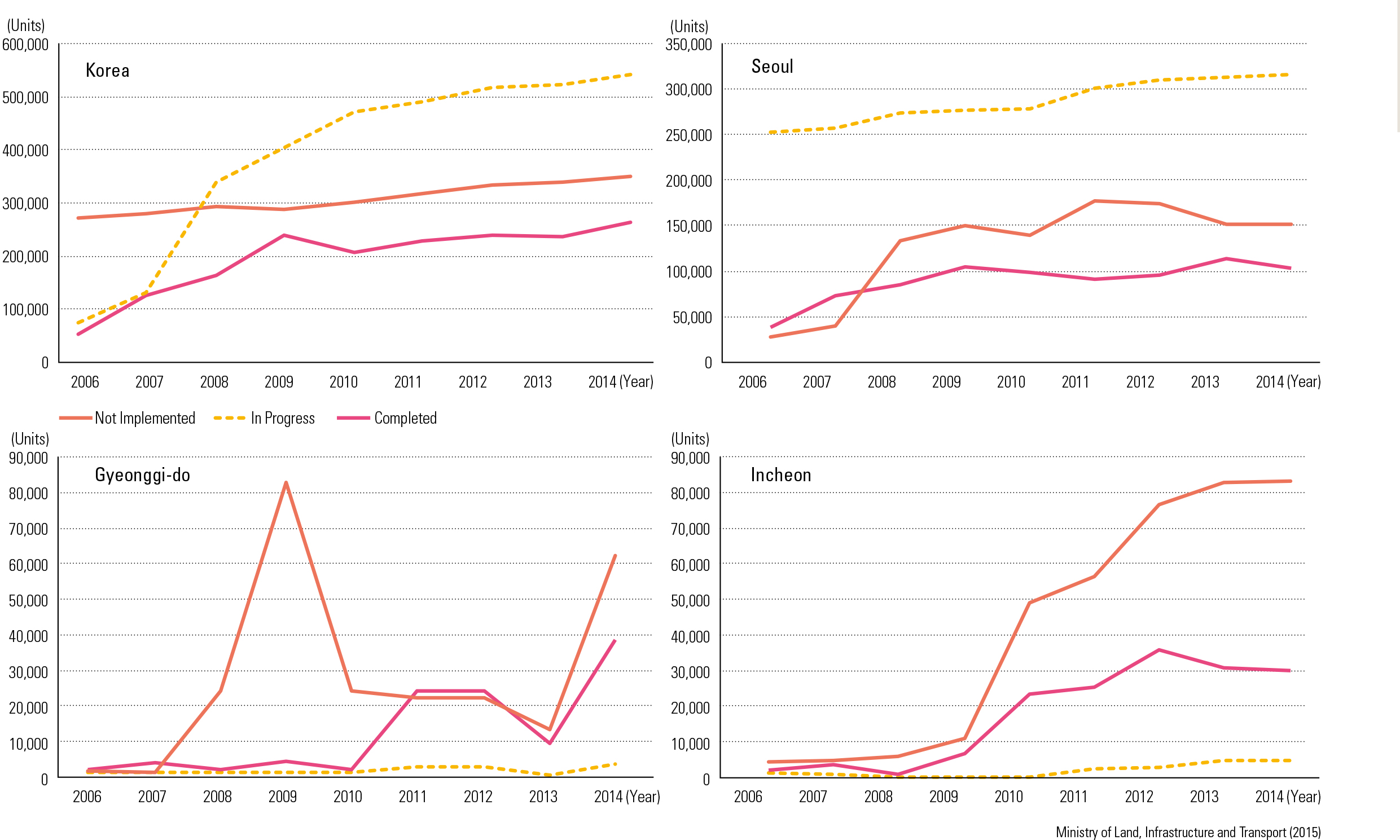English III
The 2010 statistics indicate that 75% of hous- ing units were built between 1990 and 2004. Most units built during this period are apartment buildings. About 78% of total apartment buildings were built during this period. Detached houses were predominant until 1979, but apartment and apartment-unit-in-a-house units became predomi- nant afterward, indicating a decrease in the supply of both detached houses and row houses. Housing is supplied not only by constructing new housing units but also by improving existing properties. Recently, the latter has become important as the housing supply rate has passed a critical level. Since the Urban and Residential Environment Improvement Act was enacted in 2002, four types of improvement projects have been imple- mented: area redevelopment projects, building reconstruction projects, residential environment improvement projects, and urban environment improvement projects. Area redevelopment proj- ects aim to improve residential environments with inferior infrastructure and old or faulty buildings. These projects design an entire project area thor- oughly, including not only residential buildings but also various community facilities. Building reconstruction projects are performed in areas where buildings are old or faulty while urban in- frastructure is suf cient. They focus on demolish- ing old buildings and constructing new buildings. Residential environment improvement projects also aim at improving the residential environment where buildings are outdated or faulty. Here, the government generally provides infrastructure such as roads, and government-owned land may be used for the project free-of-charge. These are different from other projects in that they aim to improve low-income housing areas.
page_2 |
